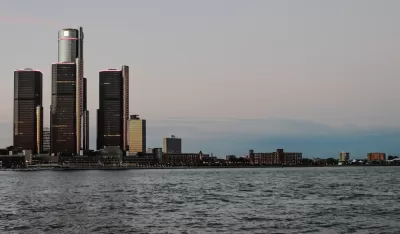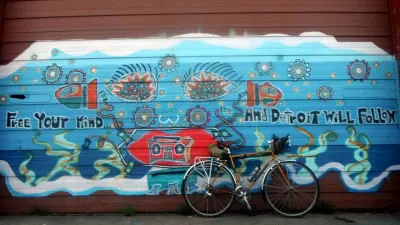In key areas like jobs and housing, the numbers show a definite Motor City rebound since the recession. But a closer look reveals uneven gains and weakness next to state averages.

The Detroit recovery narrative depends on positive citywide trends in the years since the Great Recession, like higher home sale prices and lower jobless rates. But as John Gallagher points out, "the problem with those upbeat statistics is that the deeper we dive into the data, the less sure we are of what story data tell us."
"It's not just that data cannot capture ephemeral concepts like hope, resilience and racial justice. It's also that it's too easy to cherry-pick statistics that make one's case while ignoring inconvenient facts."
One of those facts, Gallagher writes, is that Detroit's jobless rate remains at least twice that of the state of Michigan and the nation as a whole. And most of those new jobs have emerged downtown, not across the city as a whole.
Detroit's housing market tells "a similar story." Though sale prices have risen since the recession, they're still below state averages. And while new homes are going up, "the vast majority of those new residential units being built are found in and around the downtown core, not in Detroit's distressed neighborhoods." Mortgage loans are rare or nonexistent in most parts of Detroit. Renting, cash purchases, and land contracts remain the norm.
FULL STORY: Detroit can't cherry-pick statistics, ignore inconvenient facts

Planetizen Federal Action Tracker
A weekly monitor of how Trump’s orders and actions are impacting planners and planning in America.

Restaurant Patios Were a Pandemic Win — Why Were They so Hard to Keep?
Social distancing requirements and changes in travel patterns prompted cities to pilot new uses for street and sidewalk space. Then it got complicated.

Map: Where Senate Republicans Want to Sell Your Public Lands
For public land advocates, the Senate Republicans’ proposal to sell millions of acres of public land in the West is “the biggest fight of their careers.”

Maui's Vacation Rental Debate Turns Ugly
Verbal attacks, misinformation campaigns and fistfights plague a high-stakes debate to convert thousands of vacation rentals into long-term housing.

San Francisco Suspends Traffic Calming Amidst Record Deaths
Citing “a challenging fiscal landscape,” the city will cease the program on the heels of 42 traffic deaths, including 24 pedestrians.

California Homeless Arrests, Citations Spike After Ruling
An investigation reveals that anti-homeless actions increased up to 500% after Grants Pass v. Johnson — even in cities claiming no policy change.
Urban Design for Planners 1: Software Tools
This six-course series explores essential urban design concepts using open source software and equips planners with the tools they need to participate fully in the urban design process.
Planning for Universal Design
Learn the tools for implementing Universal Design in planning regulations.
Heyer Gruel & Associates PA
JM Goldson LLC
Custer County Colorado
City of Camden Redevelopment Agency
City of Astoria
Transportation Research & Education Center (TREC) at Portland State University
Camden Redevelopment Agency
City of Claremont
Municipality of Princeton (NJ)





























